Trip to Gdańsk
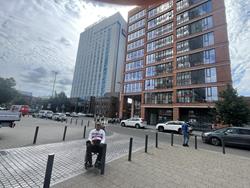
Gdańsk is one of the most beautiful cities in Poland — a combination of history, culture, and modernity. Its history spans over a thousand years and combines Polish, German, and Dutch influences. The city is vibrant all year round, offering numerous festivals, concerts, and seaside attractions.
I had no trouble finding accommodation in the city center that met my accessibility needs as a wheelchair user. The hotel staff were very friendly and genuinely interested in whether my expectations were being sufficiently met.
Long Market in Gdańsk
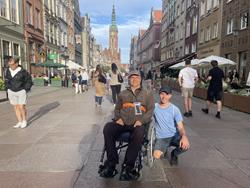
The most well-known and frequently visited place in Gdańsk is the Long Market. It's a representative square and part of the so-called Royal Route – the main path through the city's historical center. Located between the Golden Gate and the Green Gate, it used to be the site of trade and public life in Gdańsk. Along the Long Market are beautiful, historic townhouses once owned by the wealthiest citizens. This is where the famous Neptune Fountain — the city's symbol — is located, and right next to it, the Main Town Hall, one of the most valuable Renaissance monuments in Poland.
Staying in a centrally located hotel in Gdańsk makes it easy to get there as a person with a disability. The sidewalks are smooth, and the curbs are lowered everywhere. The Long Market itself is very comfortable to traverse by wheelchair.
The Crane on the Motława River
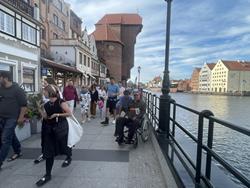
At the end of the Long Market, passing through the impressive Green Gate, you reach the Motława River — which flows through Gdańsk. The Motława waterfront is now a popular place for walking and relaxing — full of cafés, restaurants, tourist boats, and street performers. That's where the Crane is located — one of the most recognizable symbols of Gdańsk and a unique example of medieval engineering. It functioned as a port crane — used for loading goods and erecting masts on ships.
When moving by wheelchair, it's easier to walk on the side of the waterfront where the Crane stands. The sidewalks there are flat, with safe ramps easing level differences. The opposite side is less wheelchair-friendly due to cobblestone surfaces. However, it's worth crossing the modern drawbridge to get a closer look at the ship Sołdek — the first ship built in a Polish shipyard after World War II. Continuing the walk, you can admire modern yachts docked in the marina.
Ferris Wheel in Gdańsk
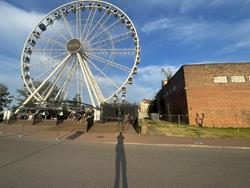
The Ferris Wheel in Gdańsk is a colloquial name for the modern observation wheel, officially called AmberSky. It is located on the less accessible side of the Motława waterfront, opposite the Crane.
The wheel is about 50 meters tall and offers panoramic views of the historic center of Gdańsk, the Motława River, the Old Town, shipyards, and the Bay of Gdańsk. The gondolas are enclosed and air-conditioned, allowing visitors to enjoy the attraction year-round, regardless of the weather.
The Ferris Wheel is fully accessible to people with disabilities. There is a convenient ramp to the ticket office on the right side, and staff deploy rails for wheelchair users to board the gondola. To enjoy the best views of Gdańsk, it's best to enter the gondola backward. The ride lasts 15 minutes and includes three full rotations of the wheel.
World War II Museum in Gdańsk
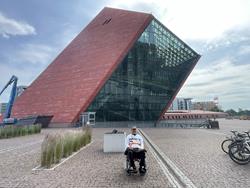
The Museum of the Second World War is a modern facility opened in 2017, documenting the origins, course, and consequences of the war from both Polish and global perspectives. Its distinctive building houses one of the largest historical exhibitions in the world — located 14 meters underground on an area of 5,000 m². The exhibit includes thousands of original artifacts, documents, and multimedia installations. The museum impresses not only with its scale but also its narrative approach. It's a place of reflection, education, and deep historical experience. Admission is free on Tuesdays. The tour lasts around 2–4 hours and is much more engaging with an audio guide. I was most impressed by the exhibits showing a typical pre-war street and a destroyed street after the war.
The entire museum and surrounding area are very well adapted for wheelchair users. There's designated parking near the building and an elevator nearby, as well as an underground parking option. Getting around inside is easy and every area is accessible. Only a few display cases could be improved — from wheelchair height, some exhibits are hard to see clearly.
Is Gdańsk worth visiting as a person with a disability?
I returned to Gdańsk after 30 years and was pleased to find it still a fascinating city — not only because of its rich history and culture but also because of its excellent accessibility for wheelchair users. Walking along the Long Market, strolling the Motława waterfront near the Crane, admiring the view from AmberSky, or visiting the WWII Museum — I felt safe and comfortable. City infrastructure, the accessibility of tourist attractions, and helpful staff made the trip not only enjoyable but also hassle-free.
Gdańsk will stay in my memory for a long time — not only as a place with fascinating history but also as a space where you can truly feel happy.
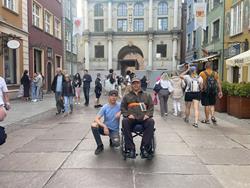
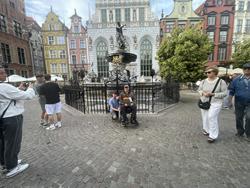
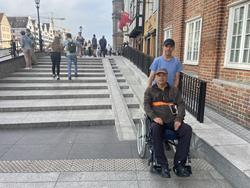
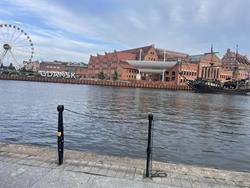
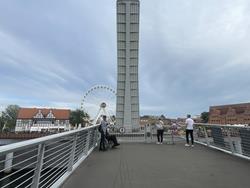
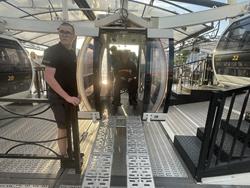
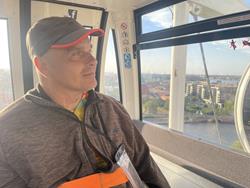
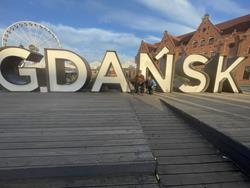
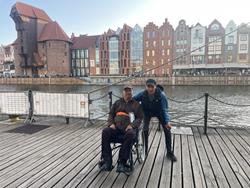
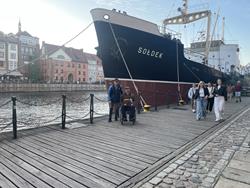
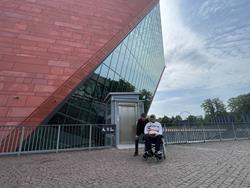
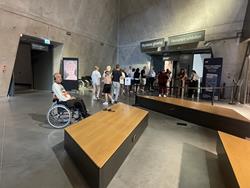
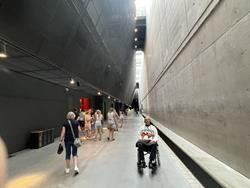
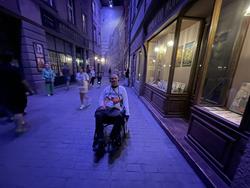
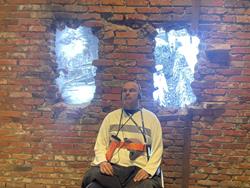
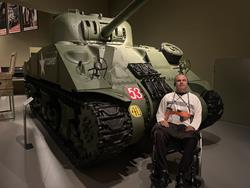
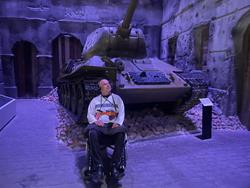

 PL
PL
 DE
DE